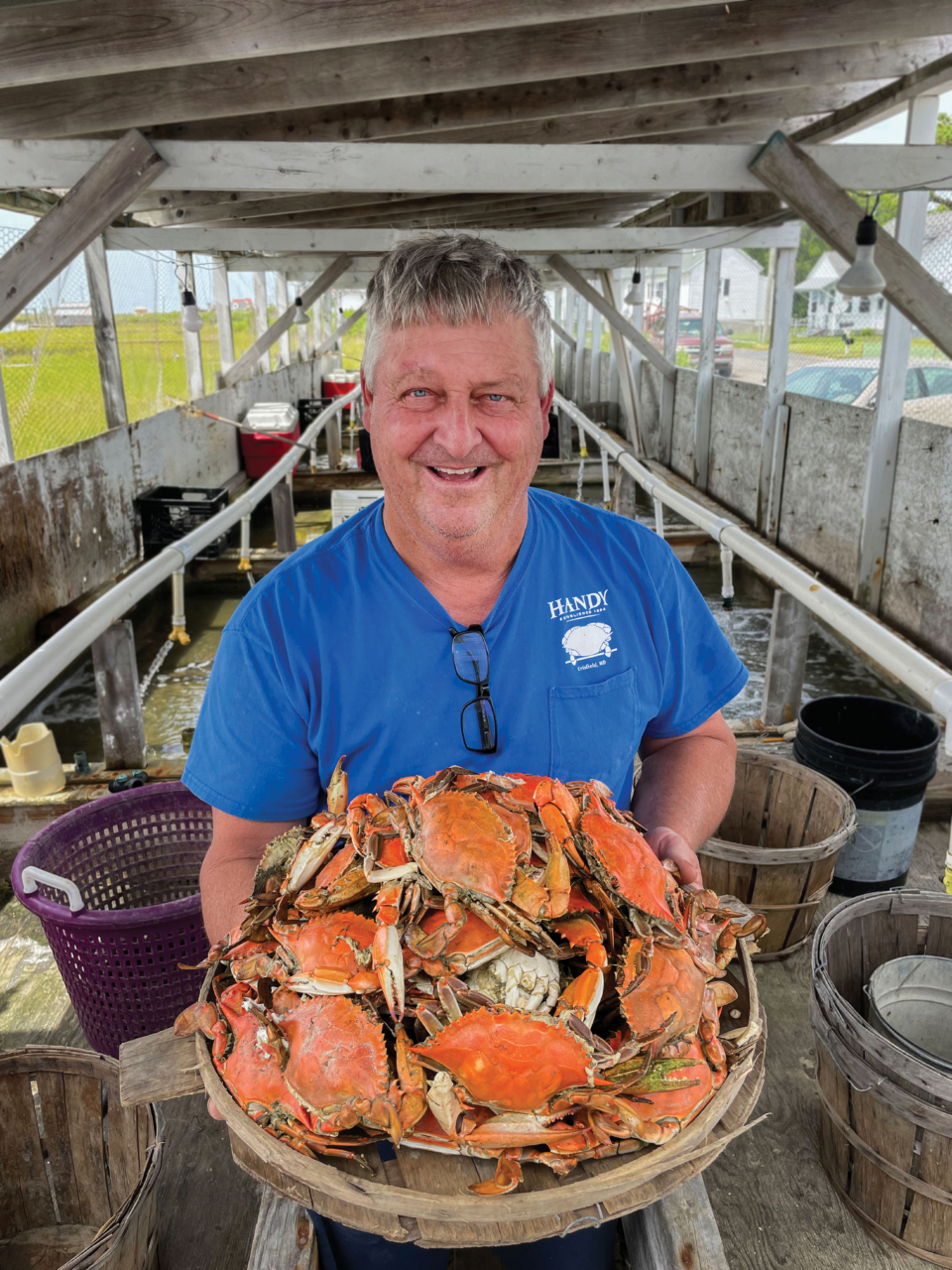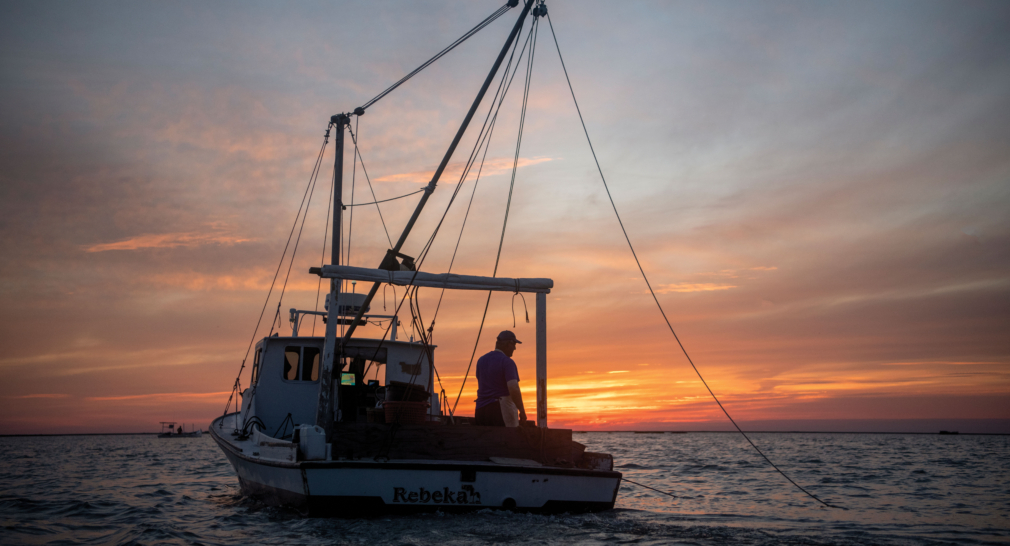Lifelong Smith Island Waterman Mark Kitching continues his family's tradition of crabbing the Chesapeake Bay
Written by Joe Willey | Photography by Jay Fleming
Perhaps more knowledge about the Chesapeake blue crab (Callinectes sapidus) can be found in the little over nine square miles of Smith Island, MD, than anywhere else on earth. Multiple generations of watermen have made Smith Island their home, all taking a short walk from their front door to their dock. Though some may see crabbing as a living museum and watermen as a determined bunch keeping the history of the Chesapeake Bay alive, they are not simply history-bound mercenaries working for the sake of tradition. Crabbing is a job — a difficult one.
Mark Kitching is a crab scraper and native Smith Islander whose family members have been watermen for generations. He uses a boat with a low draft to navigate the shallows and sides that rise only a few inches above the waterline to make it easier to pull aboard his catch. Kitching pulls a unique dredge called a crab scrape — a device similar to an oyster dredge but without the teeth needed to remove the stubborn oysters from the Bay mud. Crab scrapes are roughly five-feet wide with a net that creates a shallow trough. As the scrape is pulled through the eel grass f lats found in the shallows around Smith Island, crabs clinging to the blades of grass fall into the net. Kitching is primarily interested in catching peelers — blue crabs that are in the process of shedding the hardened shell or carapace. As the crab grows, it sheds its outer shell, exposing the soft, paper-thin skin that will soon harden for its protection. The process continues as the crab matures.

Like most on the island, Kitching can trace crabbing back for generations on his family tree. His vocation was passed down to him by his father, who he worked with until he was 21. His love of the water and crabbing comes honestly, and Kitching admits, “I always wanted to be a waterman, to do what my dad did.” That meant staying on Smith Island and watching others leave. The thought of leaving bounced around his mind — but he stayed instead.
Kitching, like most watermen, is a tireless worker, and though he is carrying on a tradition, his reasons are practical. He knows his job and the reason he does it. “At the end of the day, I just want to raise my family,” he quietly says. Pragmatism runs like the tides through each day. He knows the independent spirit of Chesapeake Bay watermen is still moored to reality. “A waterman thinks he can do anything, but he is limited,” he explains. “You work through what you have to work through.” That may mean battling weather, mechanical issues or lean seasons of fewer crabs. No work means no pay.
It sometimes surprises Kitching how little Smith Island tourists, even Marylanders, know about crabs — many have asked if crabs with a soft shell are a different species, but most know even less about watermen. Misconceptions are common. As exhaustive as the collective knowledge Smith Islanders have about crabbing and crabs, they know more about watermen and their families rising each day to head into the Bay in economic conditions that can change as rapidly as the weather. It can be a brutal and thankless way to earn a living. Kitching lives it without complaint, knowing what drives him. He simply says, “We are just doing our job.” CS


1 comment
Mark is an amazing teacher and loved showing us the ropes while on board with him a few weeks ago. I left my heart on those waters and on Smith Island!